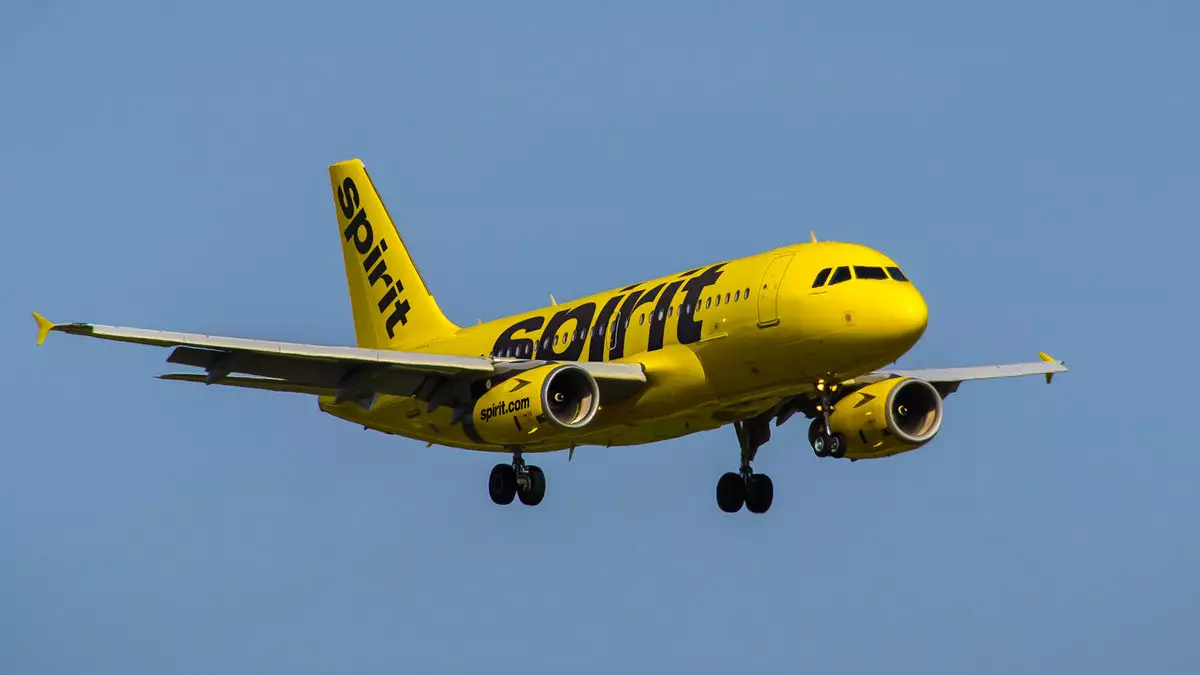In a dramatic turn of events, Spirit Airlines’ stock plummeted sharply this past Friday amidst alarming reports from the Wall Street Journal. The article highlighted ongoing discussions with bondholders about a potential Chapter 11 bankruptcy filing, a scenario that could drastically reshape the airline’s future. The report was backed by insights from “people familiar with the matter,” raising concerns among investors and passengers alike. Although Spirit Airlines refrained from commenting directly on the news, they referenced remarks from CEO Ted Christie during the company’s earnings call on August 1, where he indicated ongoing discussions with bondholders regarding debt management.
These conversations seem crucial, particularly with an impending October 21 deadline looming for the airline to refinance a significant $1.1 billion in loyalty program-backed debt. This financial obligation adds substantial pressure, especially when considering Spirit’s cumulative long-term debt, which eclipsed $3.1 billion at the close of the second quarter of this year. While the notion of bankruptcy is indeed on the table, sources indicate that a filing is not imminent, as Spirit Airlines explores alternative, out-of-court restructuring options.
Historical Context and Current Challenges
The Covid-19 pandemic has sparked significant turbulence for the aviation sector, with Spirit struggling to keep its head above water since the virus reshaped travel norms. An evident shift in consumer preferences toward premium flying experiences has particularly hurt the low-cost carrier. Financially, the first half of this year proved disastrous with an operating loss of $360 million, which accounts for a staggering loss margin of minus-11.9%. The situation only worsened, culminating in an eye-watering $496 million operating loss within the entirety of 2023.
Adding fuel to these already precarious flames was Spirit’s failed merger attempt with JetBlue, which was thwarted by a ruling from the U.S. Department of Justice earlier this year. The blockage of this merger denied Spirit a potential lifeline that might have helped stabilize its financial health amid climbing losses. In a bid to mitigate these losses and streamline operations, the airline has resorted to aggressive route cuts—approximately 50 to 60 routes are planned for elimination in November and December alone, as noted in a recent Deutsche Bank analysis.
Looking Ahead: Strategies for Recovery
As Spirit Airlines endeavours to navigate these turbulent waters, clarity on their strategic moves remains vital. The ongoing discussions with bondholders could yield constructive outcomes if skillfully managed, allowing the airline to potentially restructure its debts without leaning on bankruptcy as a crutch. Furthermore, by realizing the shift in consumer travel preferences, Spirit can consider diversifying its offerings or modifying its business model to recover lost ground.
While the aviation landscape continues to evolve rapidly, the path forward for Spirit Airlines entails a complex cocktail of aggressive restructuring, adapting to market demands, and possibly leveraging partnerships that adhere to regulatory frameworks. As the airline seeks to regain its footing, passengers and stakeholders alike will be watching closely, hoping for a turnaround after years of navigating through unusually choppy skies.

